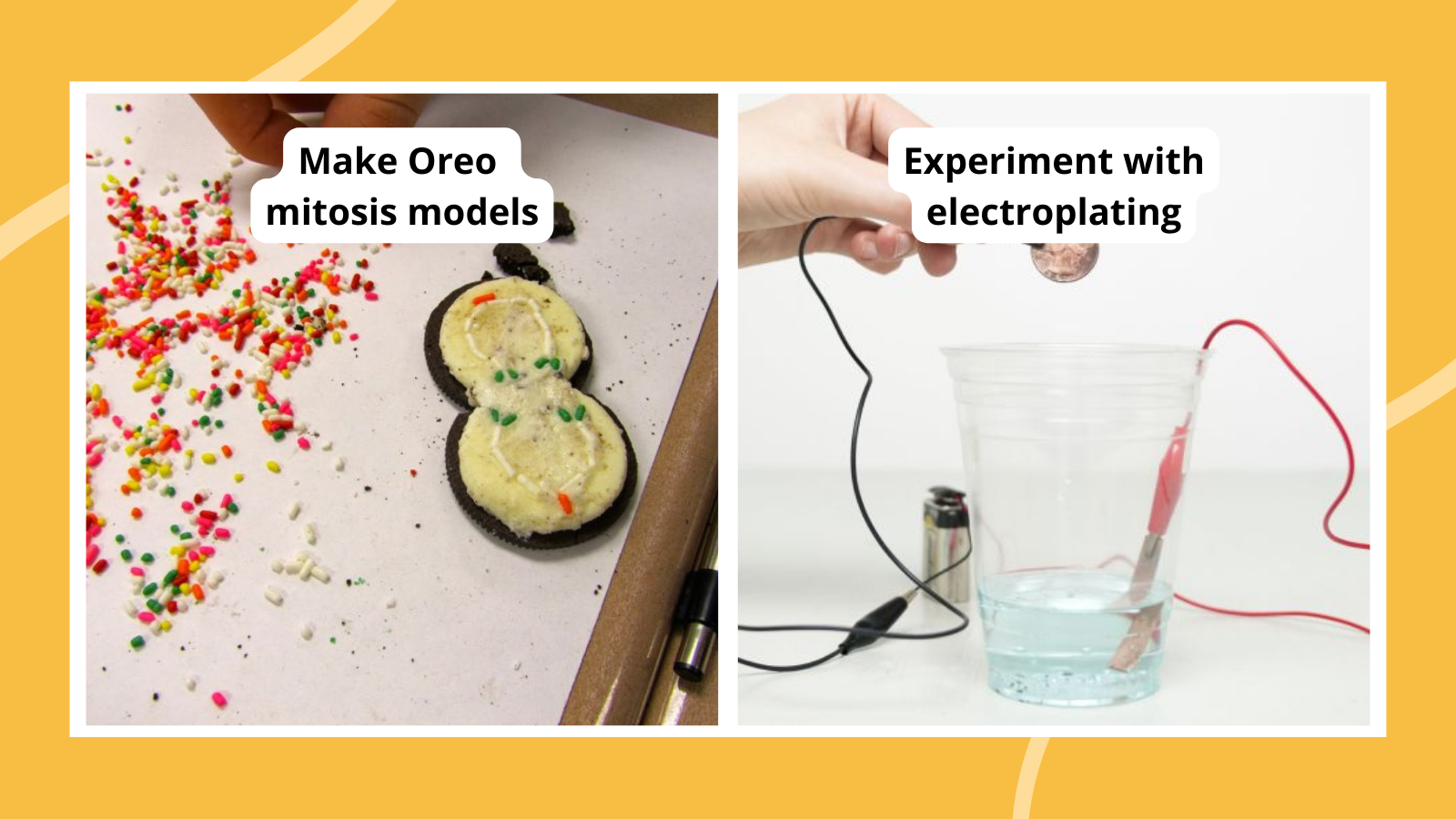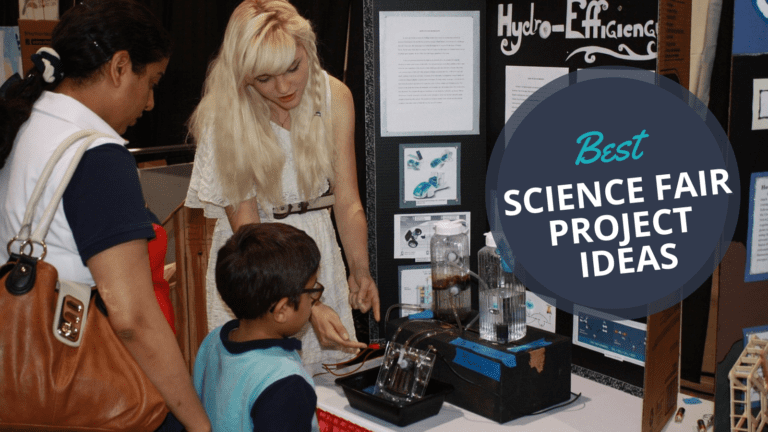It’s science fair time! You can use science fairs to engage students in completing a formal experiment from hypothesis to conclusion, or you can use the opportunity for students to create, demonstrate, and explain a science concept or phenomenon. Whatever your approach, we have the best science fair ideas for 7th grade. Use this list for science fair ideas for biology and environmental science, chemistry, physics, or engineering.
We’ve organized the science fair ideas to help students figure out which project is right for them.
Level of difficulty:
- Easy: Allows students to engage in a topic that is familiar and that they may have studied in previous grades
- Medium: Requires students to do additional research or learn about a topic that can be difficult
- Advanced: Requires a deep understanding of a complex topic
Materials:
- Basic: Materials can be found around the house
- Medium: Some materials will have to be purchased
- Advanced: Student may have to find materials in the science lab or specialty stores
Best Biology and Environmental Science Fair Ideas for 7th Grade
These projects are ideal for students who love biology (mitosis, meiosis, genetics) and environmental science (ecosystems and habitats, etc.). Students will find projects that lend themselves to data collection, demonstration, and experimentation.
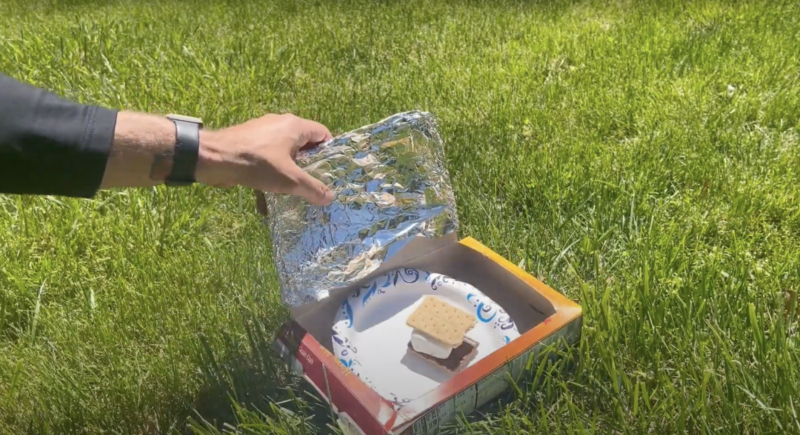
Make a solar oven
Difficulty: Easy / Materials: Basic
This experiment is great particularly if you live in a hot, sunny area. Students create an oven using a cereal box and materials they have around the house. Then, use it to cook a s’more.
Learn more: Solar Oven Science Experiment
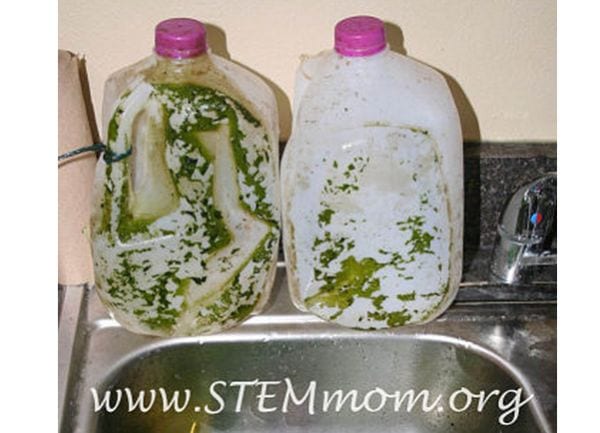
Grow biofilm
Difficulty: Medium / Materials: Medium
Biofilm are the bacteria that grow on surfaces. Students can grow biofilm, and explain how they may grow differently on different surfaces. They can also explain any benefits or drawbacks to having biofilm on surfaces.
Learn more: Biofilm Experiment
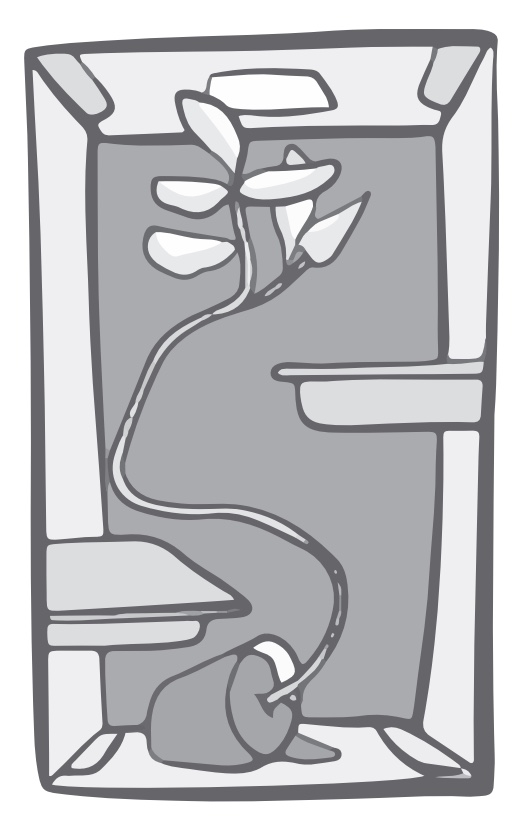
Plant light maze
Difficulty: Medium / Materials: Basic
Students build a maze for a plant to grow through using a shoebox with obstacles students build in and a light source at one end. This experiment takes some planning but the result is impressive.
Learn more: Plant Light Maze

Make a solar eclipse viewer
Difficulty: Easy / Materials: Basic
If you have a science fair that occurs during a solar eclipse event, making a solar eclipse viewer and documenting the experience of viewing and understanding the eclipse makes a great science project.
Learn more: Make a Solar Eclipse Viewer
Demonstrate phototropism
Difficulty: Easy / Materials: Medium
Phototropism is the way that plants move in response to light. Students set up a demonstration and record what happens. They can use paper and pencil or a video to show and explain what happens to their plants.

Record bird sightings
Difficulty: Easy / Materials: Medium
This is a great way to build a love of birding for life. Students can make and hang their bird feeders, then record their data over a month or more and share it at the fair.
Learn more: Cornell Lab Project FeederWatch

Use Oreos to model mitosis
Difficulty: Medium / Materials: Medium
A 7th grade science activity that doubles as a sweet treat? Your students are going to love this activity using Oreo cookies and colorful sprinkles to make cellular mitosis models.
Learn more: Oreo Mitosis

Model meiosis with pipe cleaners
Difficulty: Medium / Materials: Medium
Meiosis is similar to mitosis, but it’s specific to the production of gametes. These hands-on models use basic materials like pipe cleaners and beads to make the process easier to visualize.
Learn more: Meiosis Models

Jelly-bean genetics
Difficulty: Easy / Materials: Medium
If you’re learning about how genetic traits are passed along from parent to child, try this jelly-bean demo. When you’re finished, you can enjoy a sweet treat!
Learn more: Jelly Bean Genetics
Model the carbon cycle
Difficulty: Medium / Materials: Basic
Take students’ knowledge of cycles up a notch by focusing on the carbon cycle. Students create and explain a model of the carbon cycle. (Bonus: add in some physics and see if students can add movement to their models.)
Measure carbon content
Difficulty: Medium / Materials: Basic
In this experiment, students measure the carbon content in various household products.

Create a taxonomy system
Difficulty: Medium / Materials: Medium
Students can step into Linnaeus’ shoes by creating their own system of taxonomy using a handful of different dried beans. This is a fun 7th grade science project to do in groups, so students can see the differences between each group’s system.
Learn more: Taxonomy Project

Watch the greenhouse effect happen
Difficulty: Easy / Materials: Medium
Climate change can be a contentious topic, so start by teaching kids about the greenhouse effect, which is easy to see and understand. Then, urge them to explore data collected by other scientists so they can learn to make informed decisions about topics like global warming.
Learn more: Greenhouse Effect

Model cell membranes with bubbles
Difficulty: Medium / Materials: Medium
Students learn about cell membranes and teach others using bubbles in this demonstration.
Learn more: Cell Membrane Bubble Lab
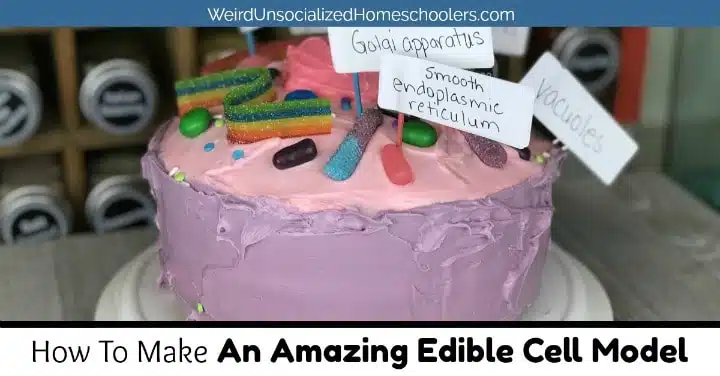
Bake a cell model
Difficulty: Medium / Materials: Medium
Sure, students could build a cell model out of clay, but cake and candy are so much more delicious! Check out the link below to see how one teacher does it.
Learn more: Edible Cell Model

Simulate natural selection
Difficulty: Medium / Materials: Medium
Travel to the Galápagos Islands and follow in Darwin’s footsteps as students explore finch beak adaptations in this clever natural selection lab.
Learn more: Natural Selection Lab
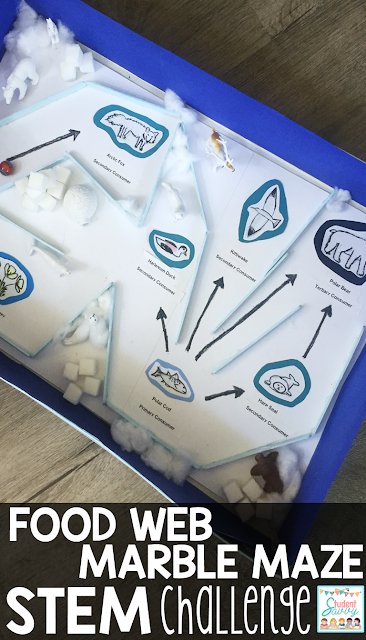
Food chain marble maze
Difficulty: Medium / Materials: Medium
Combine a STEM challenge with learning about food webs in this clever project. Kids will love the hands-on aspect, and it will really help the learning stick.
Learn more: Food Web Marble Maze
Water filtration
Difficulty: Easy / Materials: Basic
Show how different materials filter water and how we can clean water using different methods. Students can create filters with one type of material in each, and different combinations to compare how well each filters water.
Acid rain and plants
Difficulty: Easy / Materials: Basic
Show how acid rain impacts plants. This experiment provides a good, dramatic result for students to showcase.

Create a grow box
Difficulty: Medium / Materials: Medium
Students show what they know about how plants grow and what they need by creating a grow box. Students who are especially interested in building will enjoy this project.
Learn more: Build a Grow Box
Best Chemistry Science Fair Ideas for 7th Grade
Chemistry experiments can be the most fun because they create the biggest bang, literally. Here are a variety of chemistry science experiments that 7th graders can run with.
Freeze water in an instant
Difficulty: Easy / Materials: Medium
Explore the concept of nucleation (the process of chain reactions) by turning water into ice in seconds! Make this a 7th grade science fair project by trying the same process with other liquids.

Model homeostasis
Difficulty: Medium / Materials: Advanced
This is such a fun way to teach kids about the concept of homeostasis. Get all the instructions you need at the link.
Learn more: Homeostasis Lab

Make teabags fly
Difficulty: Easy / Materials: Medium
This easy experiment is a cool way to show kids how heat affects air molecules, making hot air rise. They’ll need some supervision with the fire, so try this out on the playground for extra safety.
Learn more: Flying Tea Bag Experiment

Show how salt impacts density
Difficulty: Easy / Materials: Medium
Explore the salinity of various bodies of water, then re-create their waters to see if you can make an egg float or sink. Experiment with other objects too.
Learn more: Saltwater Density
Make a density rainbow
Difficulty: Easy / Materials: Medium
We learn early on that oil floats on water, but where do other liquids fit in? Students find out when they conduct this colorful density experiment that has them layer different substances, making a rainbow.
How materials impact teeth
Difficulty: Medium / Materials: Basic
Show how different liquids impact our teeth using eggs as a stand-in for our pearly whites. A great experiment to talk about practical implications.

Magic milk
Difficulty: Easy / Materials: Basic
The magic milk experiment, where students show how molecules and substances interact, is a great one to do on the spot. Push the science by having students explain what is happening at the molecular level and hypothesize how this interaction could happen using other substances.
Learn more: Magic Milk Experiment
Split water
Difficulty: Advanced / Materials: Advanced
Students use a battery and pencils to show how water splits into hydrogen and oxygen. They can tell which gas is which by observing the number of bubbles that are in each stream (hydrogen will have double the bubbles as oxygen). This is another great experiment to model at the fair.

Fizzy driving car
Difficulty: Medium / Materials: Basic
Show how a chemical reaction (candy and soda) can power a car. Students can demonstrate and be ready to answer questions about how this reaction is strong enough to move an entire car.
Learn more: Candy & Soda Balloon Experiment
At the speed of melting ice
Difficulty: Easy / Materials: Basic
This is another experiment that can be done at home and reported on at school. Students put ice into different bowls and see which conditions make it melt fastest. Challenge 7th graders by having them create their conditions to isolate the dependent variable as much as possible, and to be as specific as possible in their explanation.
Elephant toothpaste
Difficulty: Easy / Materials: Basic
Who doesn’t love an exploding experiment? This experiment uses a reaction between hydrogen peroxide and yeast, soap, and food coloring to create a huge multi-colored foam explosion.
Learn more: Elephant Toothpaste Experiment
Invisible ink
Difficulty: Easy / Materials: Basic
Students who want to understand how chemicals react can use basic household materials to create invisible messages, and teach their friends how to do the same. Explain the reaction and set up a station for students to explore how to write their own invisible messages.

Mentos and Coke explosion
Difficulty: Easy / Materials: Basic
This is an experiment that kids may have done at home, but bring it to the science fair by having them dissect what’s happening at the molecular level.
Learn more: Mentos and Coke Experiment
Translucent egg experiment
Difficulty: Easy / Materials: Basic
Students explain acids, bases, and chemical reactions with this demonstration. They’ll have to conduct the experiment at home and be ready to answer questions on fair day.
Learn more: Egg and Vinegar Experiment
Polymer bouncy balls
Difficulty: Easy / Materials: Basic
Another science demonstration with a fun outcome. Students demonstrate how changing the ingredients that you use to make a ball changes its properties.
Make rock candy
Difficulty: Medium / Materials: Basic
Show how crystals grow, and how seed crystals change the rate that rock candy grows by making different batches of rock candy and seeing which factors impact the final result.
Metal corrosion
Difficulty: Medium / Materials: Medium
In this experiment, students set up the conditions for different materials to rust and then collect data as the materials, well, rust. It’s a good way to practice a controlled experiment and data collection.
Mummified hot dog
Difficulty: Easy / Materials: Basic
Use baking soda to mummify a hot dog and explain how chemical reactions can change something, like a hot dog, dramatically.
Make fluffy slime
Difficulty: Easy / Materials: Basic
What would a science fair be without slime? Challenge students to make slime with different substances to predict and learn how it turns out.
Learn more: How To Make Slime
Boiling point of water
Difficulty: Easy / Materials: Basic
Students add varying amounts of salt and other soluble materials to water and see how it affects the boiling point. A great opportunity for data collection.
Make a lava lamp
Difficulty: Easy / Materials: Basic
Students demonstrate a common chemical reaction by making a lava lamp. This is a fun option for a science fair project because students can lead participants through the process.
Best Physics Science Fair Ideas for 7th Grade
Physics experiments and projects are all about moving things around in lots of different ways. These cool physics experiments will test students’ physics knowledge and perseverance as they try to get their projects to work just right.
Generate electricity
Difficulty: Medium / Materials: Medium
In this science fair project, kids build a generator from scratch. Turn it into an experiment by varying the materials to see if you can increase the amount of energy it produces.
Test balloon elasticity
Difficulty: Easy / Materials: Medium
Explore whether heat and cold have an effect on elasticity using balloons. Try this with other materials too to expand the project.
Learn more: Balloon Science
Make a pet auto-feeder
Difficulty: Advanced / Materials: Advanced
Can you build a device that feeds your pets automatically? Even better, can you make it inexpensive and easy for others to build too? This project has real practical applications.

Design a pinball machine
Difficulty: Medium / Materials: Medium
Give your class basic supplies like rubber bands, plastic cups, and cardboard boxes. Then challenge them to create their very own pinball machines!
Learn more: Pinball STEM Challenge
Demonstrate centrifugal force
Difficulty: Medium / Materials: Medium
This classic science experiment teaches kids about centripetal force. Be forewarned: This could potentially make a bit of a mess, so consider where this science fair project is placed.
Another way to demonstrate centrifugal force
Difficulty: Easy / Materials: Basic
Here’s another way to demonstrate centrifugal force. Students can set up the demonstration and let participants try it out.
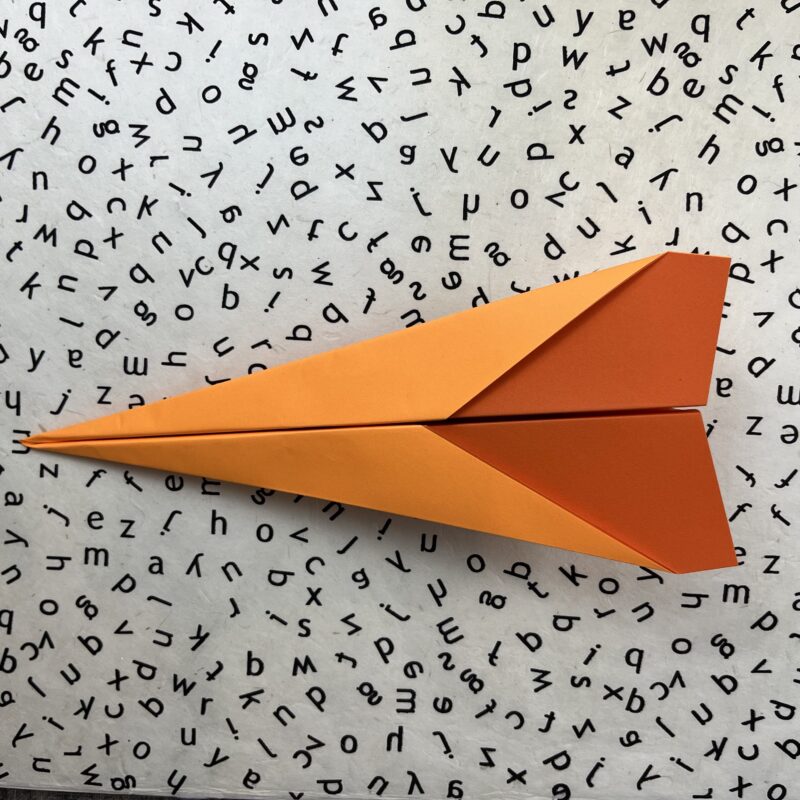
Paper airplane dynamics
Difficulty: Medium / Materials: Basic
Students can explore aerodynamics by making and testing paper airplanes. Which paper airplane features make the plane fly the farthest? How does aerodynamics explain this?
Learn more: Paper Airplane Designs
Potato battery
Difficulty: Medium / Materials: Medium
Another way to make a battery—students can use what they have in their pantry. After they create a potato battery, they figure out how to use it and explain why it works.
Paper roller coaster
Difficulty: Medium / Materials: Basic
Test and demonstrate the laws of physics with a paper roller coaster. This is a great fair experiment because participants can join in the fun, sending marbles along each roller coaster students make.
Maglev train
Difficulty: Medium / Materials: Advanced
Show how magnets work with a maglev train. Students use wooden blocks with magnets to show how magnets can attract and repel to create movement or attraction.

Tornado in a bottle
Difficulty: Easy / Materials: Basic
Another classic science experiment, students show how tornadoes funnel using 2 liter bottles, water, and a tornado connector tube. Add LEGO bricks or small toy animals to show how a tornado impacts objects it comes into contact with.
Learn more: Tornado in a Bottle
Demonstrate waves
Difficulty: Medium / Materials: Basic
Students learn about compression and transverse waves, and how to show each with a common slinky. This is a great project for a student who has mastered the middle school content and is ready for more.
Learn more: Teaching Students About Waves
Balloon-powered car
Difficulty: Medium / Materials: Basic
Use a balloon and building materials to create a car that shows how force works. If more than one student selects this as their project, compare the result. Which car moves the fastest and why?
How the strength of a magnet varies by temperature
Difficulty: Medium / Materials: Medium
Students test how strong magnets are, and what happens when the magnet changes either by heating up or cooling down.
Measure the surface tension of water
Difficulty: Medium / Materials: Basic
Students research surface tension and how to measure it, then they set up their station and teach others how to understand surface tension.
Penny battery
Difficulty: Medium / Materials: Medium
Make a battery using pennies, aluminum foil, and a water-salt solution. Seventh graders can explain what’s happening to make the battery work and find a creative way to show the power of their battery.
Best Engineering Science Fair Ideas for 7th Grade
For students who like to build, build, build, engineering projects are a perfect science fair project. These engineering ideas are doable for middle schoolers and have practical applications they can talk about.
Make a robotic hand
Difficulty: Medium / Materials: Basic
Students engineer a robotic hand and can demonstrate it at the science fair. So cool!
Light switch box
Difficulty: Medium / Materials: Medium
Students learn about electricity while making a light switch box. Challenge them to find a practical use for their new knowledge about how electricity works.

Rubber band helicopter
Difficulty: Medium / Materials: Basic
Create a helicopter and explain how it flies using materials you have around the house. Students can also get creative using different-size rubber bands or testing various materials that are heavier or lighter.
Learn more: Rubber Band Helicopters
Design an eco-friendly house
Difficulty: Medium / Materials: Medium
This project requires research into what makes a house eco-friendly, and then creativity to design a house model that would be eco-friendly. Students can also calculate the amount of carbon their house would save if it were functioning.
Make a windmill
Difficulty: Advanced / Materials: Medium
Another eco-friendly idea, have students make a windmill. If they can get it going and producing energy, they’ll really have something to show off.
Design a weather-proof house
Difficulty: Medium / Materials: Medium
Students choose a type of extreme event (earthquake, tornado, hurricane) and design a house or structure that they think would sustain that event. Then, they test it on a small scale and talk about their results.

Build a hydraulic lift
Difficulty: Medium / Materials: Basic
Design a lift using water. Such a cool way to demonstrate engineering and physics.
Learn more: Design a Hydraulic Elevator
Make a Rube Goldberg machine
Difficulty: Advanced / Materials: Basic
The idea behind a Rube Goldberg machine is to create a complex machine to solve a simple problem. This is a great project for students who want an extra challenge.
Make a weather station
Difficulty: Medium / Materials: Advanced
This project can be as complicated or simple as students want. They can show ways to measure and track weather using household objects, or they can figure out how to use solar power to provide energy to power a station. Either way, they’ll have something to talk about.
Buy it: DIY Weather Station at Amazon
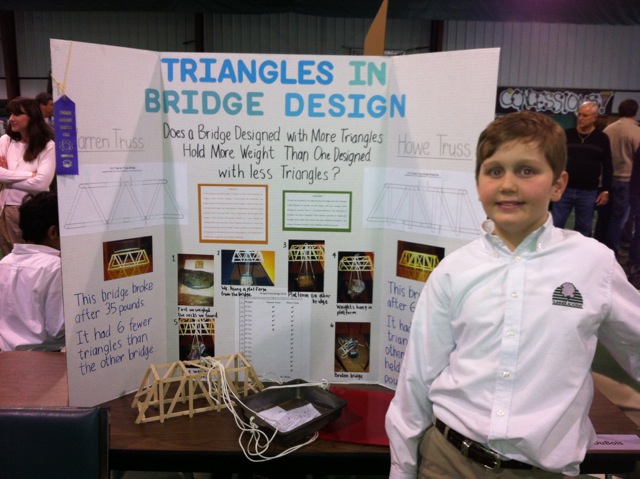
Bridge design
Difficulty: Medium / Materials: Basic
There’s a lot students can do with bridges: design them and analyze the structure and load they can take, measure how well they do in simulated disasters, and see how much support a bridge needs to span a long distance. The possibilities are endless!
Learn more: Check out how one student tackled bridges in his science fair project.

Design a catapult
Difficulty: Easy / Materials: Basic
Students learn the engineering and physics of catapults, and set up various examples for participants to try. Students can make catapults as large or small as they want.
Learn more: Catapult Project
Make a pendulum
Difficulty: Medium / Materials: Basic
Students research pendulum and movement, and then create various demonstrations, like this paint pendulum, to show participants how pendulums work.
Make a saltwater battery
Difficulty: Medium / Materials: Medium
Students demonstrate how to use salt water to create a battery and move voltage from one location to another.
Earth Science Project Ideas for 7th Grade
You’ll always have students who are into rocks, dinosaurs, the earth, and more. These ideas allow those students to dive deep (pun intended) into geology and earth science.

Test how hard rocks are
Difficulty: Easy / Materials: Basic
Yes, all rocks are hard, but some are harder than others. Students learn about how rocks are classified, collect and test rocks in your area, and present what they learn.
Learn more: Rock Experiment
Show plate tectonics with crackers
Difficulty: Easy / Materials: Basic
Students research plate tectonics and use graham crackers and frosting to model them. Delicious and educational!
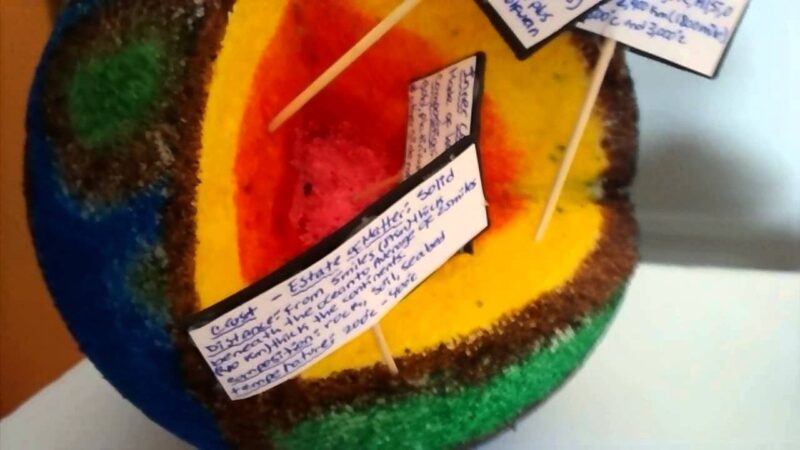
Make the layers of Earth
Difficulty: Medium / Materials: Basic
Students may be familiar with the layers of Earth, but allow students to dig deeper by figuring out a way to present the layers incorporating detail and explanation that go beyond the crust.
Learn more: The Layers of the Earth

Explain oil spill cleanup
Difficulty: Easy / Materials: Basic
Students research how oil can be cleaned up and model it on a small scale. This project combines physics, chemistry, and earth science.
Learn more: Oil Spill Cleanup
Volcano eruption
Difficulty: Easy / Materials: Basic
This is a classic science fair experiment, but it’s worth including because 7th graders can take the explanation and volcano models to the next level with their research and explanation.
Learn more: Baking Soda Volcano Experiment
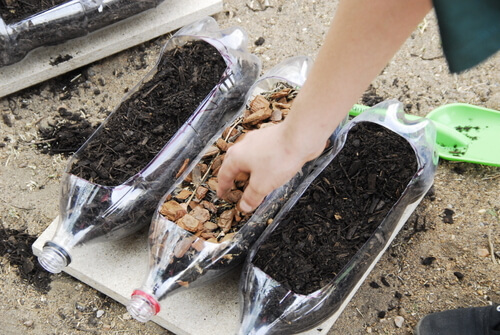
Soil erosion experiment
Difficulty: Medium / Materials: Basic
Students show how soil erodes and discuss the implications for gardening, planners and construction, and the earth in general.
Learn more: Soil Erosion Experiment
